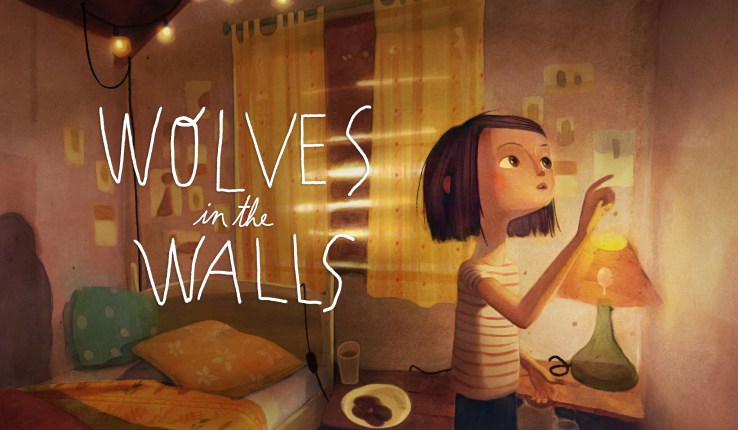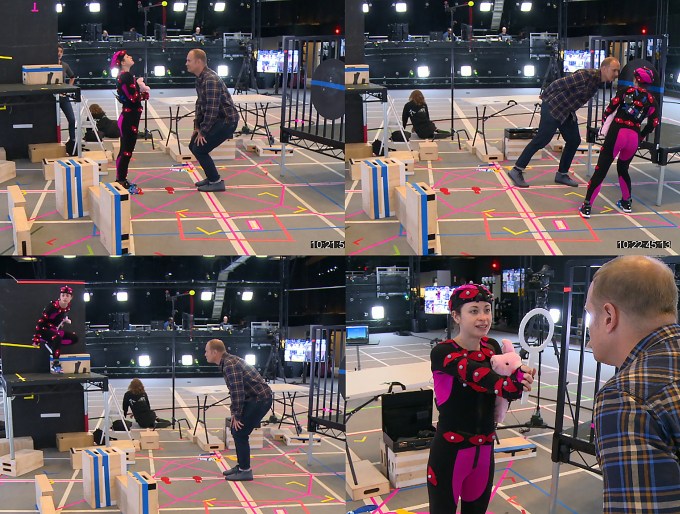With ‘Wolves in the Walls,’ the ex-Oculus team at Fable Studio makes its debut

Wolves in the Walls, directed by Pete Billington and premiering today at Sundance, is the unique product of a tight, scrappy team of pioneering creatives, with most of them sharing a common element of their past, as they were laid off from Facebook last year when the company’s VR original content arm Oculus Story Studio was shut down.
The team is back, under the name Fable Studio, a new startup dedicated to pushing storytelling forward in immersive mediums like AR and VR.
For Fable, Wolves in the Walls, based on the work of Neil Gaiman, is an opportunity to experiment as heavily as possible, given that Oculus is still footing the bill for this project from the young startup. They were admittedly already doing some wild stuff (partnering with an immersive theater group for one, working heavily with motion capture tech was another) before Story Studio was shuttered.
At Sundance, the team is showcasing just the first chapter of Wolves in the Walls. Serialized content is admittedly a bit of a letdown in VR, given that it takes so long to buy into a VR world that it’s a shame when it ends without the payoff of a story’s conclusion. Unlike Dear Angelica, which Oculus Story Studio showcased last year, Chapter 1 (the first of three) of Wolves gave me enough that I was curious of the world being built, but like so much of what I see in VR, I was left feeling like I’d just watched a demo.
The real area of promise seemed to be with the story’s pint-sized guide through the world, Lucy. Creating an emotional bond with the main character who is aiming to convince the world that there are “wolves in the walls” of her house really seems to be the team’s major creative goal with Wolves. They do this in interesting ways, using some AI tech to create moments for you to bond together that go beyond her giving you eye contact.
At one point, you’re given a Polaroid camera to snap shots of the titular wolves in the wolves, as you examine the photo and drop it to the ground, Lucy will eventually walk to the photo, pick it up and say something to you about what you photographed. These moments aren’t meant to knock you over the head, but it takes the agency present in video games and creates a sort of trivially branching narrative that is just custom enough that it touches you before returning to the story the author is building up to.
Co-founder Edward Saatchi wants to avoid things that feel like mini-games, and focus on “as much interactivity as makes you connect with Lucy.”
The world they’re creating signals a direction change that Saatchi believes could represent the future of the industry. Rather than storytellers and artists crafting stories VR and AR users passively sit through, he wants storytellers to be creating virtual storytellers, characters that walk you through their own “life experiences.”
Think, what if Siri or Alexa had backstories they could tell you or life experiences that they shared in-between you asking them the weather? It’s not quite Samantha from Her, but it’s an intriguing interface for a platform’s that’s goal is to make the digital indistinguishable from the real.

Saatchi acknowledges these AI-fueled goals are lofty and that Fable has some more ground-level things to prove in the meantime regarding VR filmmaking’s staying power. Money is a big one.
Viability is really a significant question here; enough VR game publishers have had a very rough time breaking even, doing that for a VR or AR film is a very tall order. Saatchi says that reaching break-even is his goal for Fable in 2018, but the “only way to get there right now is to create content less expensively,” and that the team is relying on “made in VR” pipelines that allow creators to build inside the medium more efficiently. He wants to cut down teams of 40 to teams of 4 or 5. On the pricing side, he’s a major proponent of the idea that consumers are generally willing to spend $1 for 10 minutes of entertainment. Regardless, these projects are likely going to have to strike a very significant percentage of total VR users in order to reach that sum.
Whether a team of virtual reality filmmakers divorced from Facebook’s war chests can become a profitable business in an industry filled with so many daunting challenges is a worthy question, but the team at Fable is filled with some of the most creative minds out there tackling challenges that don’t even exist in the physical world, only virtual reality.